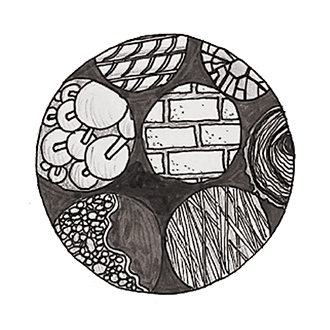
Related Questions
- Does hot water freeze faster than cold water?
- Why does structural behavior change in different types of soil?
- How does a match burn in a spacecraft?
- What makes wood rot so slowly?
- Is fire a solid, a liquid, or a gas?
- Is there a way to check a building for structural damage without knocking down walls?
- Can we safely burn used plastic objects in a domestic fireplace?
- What are the basic forces behind tape and glue?
- Why doesn’t a plain, white piece of paper reflect light, but a mirror does?
- How can a snail crawl upside-down on the underside of the surface of a pond?
How does glass change over time?
Medieval stained glass windows probably look the same today as they did the day they were made…
By Lori BakerIf left undisturbed at room temperature, glass really doesn’t change — no matter how old it is — says Michael Cima, Professor of Materials Science and Engineering and Faculty Director of the MIT Glass Lab. Contrary to the urban legend that glass is a slow-moving liquid, it’s actually a highly resilient elastic solid, which means that it is completely stable. So those ripples, warps, and bull’s eye indentations you see in really old pieces of glass “were created when the glass was created,” Cima says. They are the result of old-fashioned glass fabrication methods, not aging.
Today’s large, clear plates of glass are made by pouring molten glass onto a pool of molten tin, resulting in very flat, clear, uniform sheets. This ”float glass” method was pioneered in the 1950s and is very different from older methods of fabricating sheet glass, which involved blowing large bubbles of molten glass, cutting them off the blow pipe, splitting them open, flattening them all while hot and soft, and then cutting into panes after they had cooled. The resulting bull’s eye marks, warps, and lines are remnants of the manufacturing process — and have remained stable for, in some cases, hundreds of years.
Of course, glass can be changed by contact with other substances. Stress and abrasion can affect it, and lime glass (from which glass windows and containers are typically made) can be attacked by water. “If tiny flaws or weak points in the glass are exposed to water,” Cima says, over time the water attacks the tips of the cracks and dramatically decreases the strength of the glass.” Caustic chemical solutions and extremes of temperature can also degrade glass, though some types of glass are highly resistant to these factors, too – silicate glass, from which pyrex is made can be taken from very hot to very cold rapidly, and it doesn’t crack.
In short, glass is in it for the long haul. Though typically heavier than plastic, Cima says that its “transparency, its ability to be made very smooth, its scratch resistance” — and, yes, its durability — make glass important for applications ranging from windows to computer monitors to electronic components to insulation.
Cima says that he, too, has been subjected to the legend of flowing glass. “I was in Europe and took a tour of a medieval cathedral,” says Cima. ”When somebody asked why the stained glass windows had ripples in them, the tour guide said that it was because glass is a liquid, and these windows were so old that the glass flowed over time and created the ripples. That’s just not true. The windows were made that way.”
Posted: December 14, 2010